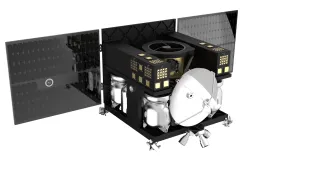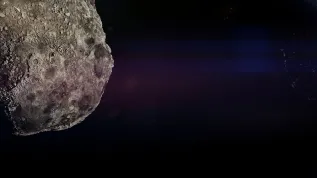
Scientists from the Astronomical Observatory of the University of Warsaw discovered two new rogue planets - not gravitationally bound to any star, floating freely through our Galaxy.
The hypotheses explaining the formation of planetary systems, such as our Solar System, predict the existence of rogue planets, not gravitationally bound to any star and floating freely through our Galaxy. Researchers from the Astronomical Observatory of the University of Warsaw have discovered two new rogue planets. Information about the discovery was provided by Prof. Andrzej Udalski from the Astronomical Observatory of the University of Warsaw.
As of now, nearly 4,000 extrasolar planets have been detected and confirmed. Most methods of finding exoplanets rely on the observation of the host stars. Astronomers can measure motion of the star in response to its planet gravity, or detect short-term dimming of the star when the planet blocks a portion of its light - reads the release sent to PAP.
"These methods allow to find hundreds of extrasolar planets, but we can not use them to search for rogue planets" - says Przemysław Mróz, a graduate student at the Astronomical Observatory of the University of Warsaw. "Rogue planets do not emit any light and so they cannot be directly detected. We use gravitational microlensing to detect them".
When a planet passes directly between an Earth-based observer and a distant star (source), its gravity may act like a giant lens, deflect and focus light from the source. Telescopes on Earth can then register a short brightening of the source star, which is called a gravitational microlensing event.
This method allows to find objects that do not emit light at all, such as rogue planets. The duration of the phenomenon depends on the mass of the lens - the smaller it is, the shorter the microlensing event. Typical events caused by stars last several days, events caused by planets - just a few hours.
"In order to accurately measure the masses of rogue planets, apart from the duration of the event, researchers need additional information such as the speed of the lens relative to the source. "To do this, we use the +Hollywood+ strategy, we follow the biggest stars" - says Przemysław Mróz. - "Literally the biggest ones, because giant stars can be several dozen times larger than our Sun".
Scientists used the "Hollywood" strategy to study two microlensing events detected by the OGLE sky survey led by the astronomers from the Astronomical Observatory of the University of Warsaw. One of the planets is among the smallest rogue worlds that have been found, slightly more massive than Earth. The second event was caused by a Jupiter-mass object.
"These observations are consistent with our previous predictions that there should be at least one low-mass rogue planet per each star in the Milky Way" - concludes Prof. Andrzej Udalski, the Principal Investigator of the OGLE project.
The publication on the subject of the discovery is based on observations collected with the Warsaw Telescope, located in the Las Campanas Observatory in Chile, as well as other telescopes located in New Zealand, Australia, South Africa and Israel.
The article describing the discovery appeared in the latest issue of "Astronomy & Astrophysics" and was distinguished by the journal`s editors as one of the most interesting papers in the current issue.
The co-authors of the discovery and publication are experts from the Astronomical Observatory of the University of Warsaw and scientists from the U.S., Korea, Japan, the UK, New Zealand, Germany, China, Spain and Israel.
Przemysław Mróz is the laureate of the Start Scholarship of the Foundation for Polish Science and the Etiuda grant of the National Science Centre. The OGLE project is co-financed by the Ministry of Science and Higher Education (science grants Ideas and Iuventus plus, Scholarships for Outstanding Young Scientists, Diamond Grants, SPUB), National Science Centre (grants MAESTRO, Opus, Harmonia, Sonata, Symfonia, Etiuda) and the Foundation for Polish Science (professorial subsidies, Team, Homing, Focus and Start programmes).
PAP - Science in Poland
zan/ war/
tr. RL













